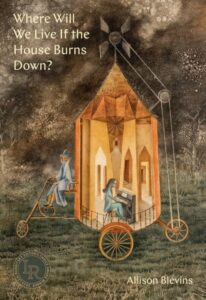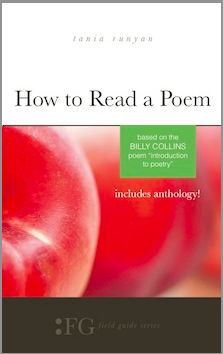Alison Blevins explores the meaning and impact of illness in families
We’re familiar with the meaning of chronic illness. The most common types are cancer, heart disease, and diabetes, diseases with no known cures. They can often be mitigated and their effects reduced or controlled, but that doesn’t mean they’re eliminated, or that they no longer have to be dealt with and lived with.
The impact of chronic illness on families can be devastating, disrupting and forever changing the patterns of daily life and relationships, and often fundamentally changing the relationships themselves. That is what Alison Blevins explores in Where Will We Live If the House Burns Down?: Poems, a collection of 62 untitled prose poems in paragraph form. Collectively, the poems read like a fable of contemporary life.
Grim, her partner the Sergeant, and their children live together. We never learn the names of the children, but the names given the two adults are important. Grim, the wife, suffers from a chronic illness. The Sergeant grows increasingly distant from Grim, the illness, and the family. Grim understands what’s happening and is often desperate to stop it, but chronic illness usually doesn’t pay much attention to what we so intensely want.
Even Grim’s doctor often misunderstands:

tell him that the chronically ill don’t have goals. They
don’t want to be ill. Grim wants her old body back. She
doesn’t want to be in his office. Grim tells the doctor, I
want to stand long enough to make grilled cheese, want to
walk the dark living room at night to check the children are
breathing. She wants to say absurdly large sunflowers
block her path, her hair floats toward the ceiling as if
her body is sinking in water, the flower vines out and
wraps her hips and arms like a handshake. She wants to
stop the knife from cutting into her head like cooked
meat on a platter of lettuce and tomatoes.
The promotional blurbs make much of the collection’s featuring of a gender-bending couple. And it is a theme. More striking to me, though, were the moving descriptions of what it means to live with chronic pain, and the physical and emotional wreckage it can leave in its wake. I know people who suffer from it, and I know the physical suffering doesn’t blind them from the impact on close family members. Chronic illness can also create guilt in sufferers and those around them. Blevins writes from personal experience, and her words resonate, no matter how one defines family.

Alison Blevins
Blevins previously published Cataloguing Pain; Handbook for the Newly Disabled: A Lyric Memoir; Slowly / Suddenly; and five poetry chapbooks. She is the founder and serves as director of Small Harbor Publishing and formerly served as the executive editor at The Museum of Americana: A Literary Review. She lives with her family in Minnesota.
Where Will We Live if the House Burns Down? is a chronicle of family and relationships, and what happens when chronic pain and suffering invade that domestic space. Pain can, and usually does, change everything.
Photo by Lenny K Photography, Creative Commons, via Flickr. Post by Glynn Young.
How to Read a Poem uses images like the mouse, the hive, the switch (from the Billy Collins poem)—to guide readers into new ways of understanding poems. Anthology included.
“I require all our incoming poetry students—in the MFA I direct—to buy and read this book.”
—Jeanetta Calhoun Mish
- Finding Poetry in an Anselm Kiefer Art Exhibition - November 25, 2025
- Poets and Poems: Autumn Williams and “Clouds on the Ground” - November 20, 2025
- The Manuscript of “The Waste Land” by T.S. Eliot - November 18, 2025


Leave a Reply